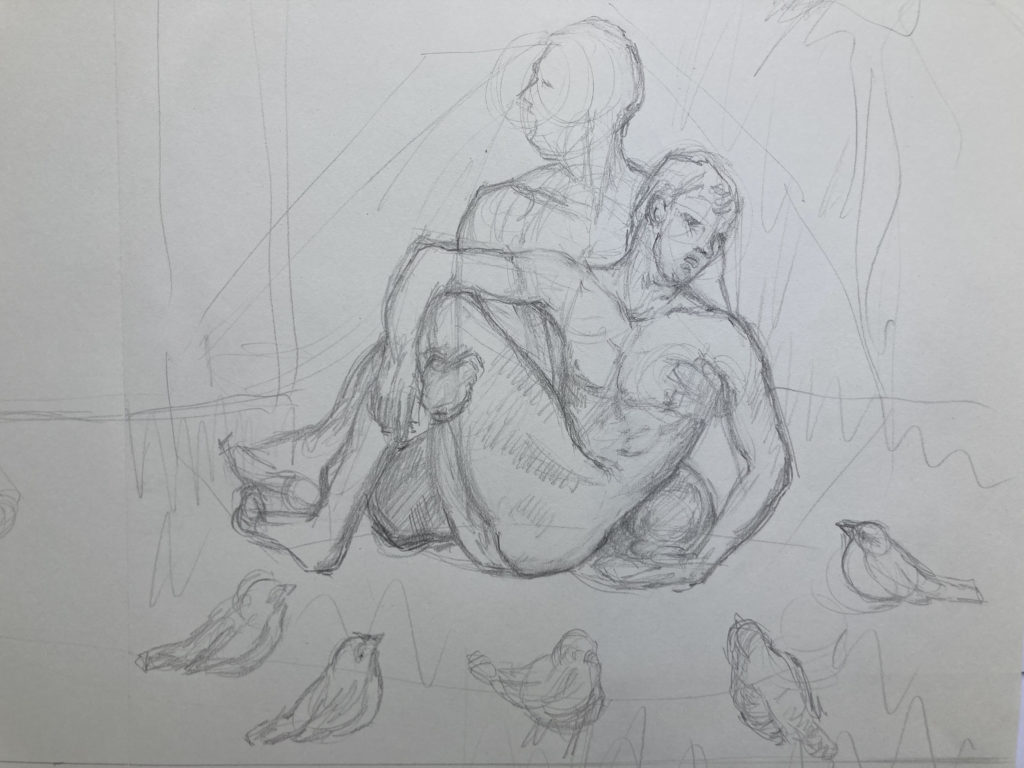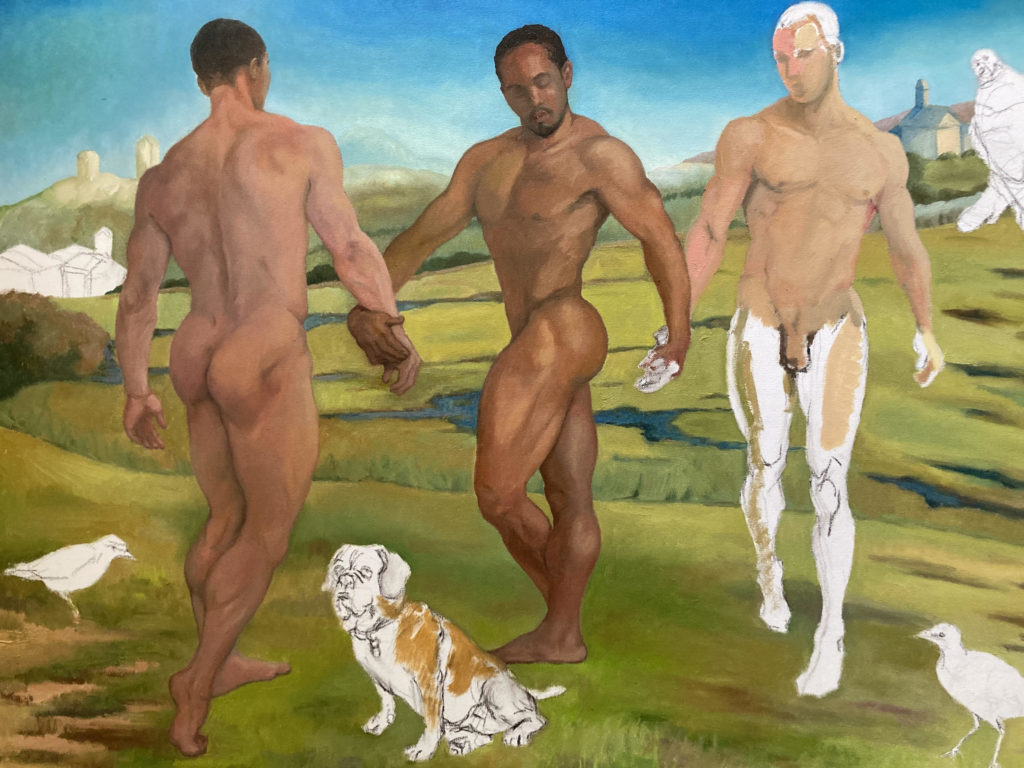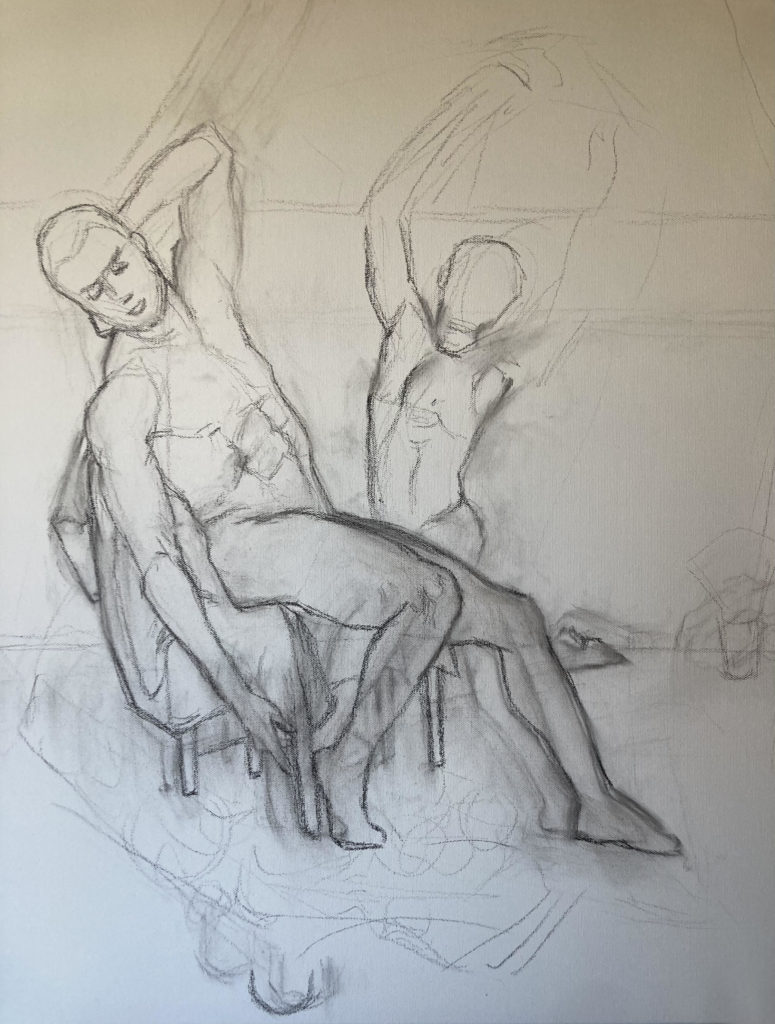No chains
I decided to exclude the chains. It is enough to depict two people bound together struggling to be free. Or is only one aching to be free? Difficult to tell from this image. So often people have their epiphanies after they destroy others. And the destruction may not be literal or obvious. It is enough to wear away at someone’s confidence or their self-worth. Often, one’s self-actualization is an excuse to think of oneself above others. I still like the abstract background these figures inhabit. I am reminded of the work of David Park. It has always been a goal of mine to depict figures in a landscape but to have the elements appear to be organically formed, that is, to grow from each other. Complicated, and difficult to achieve.













